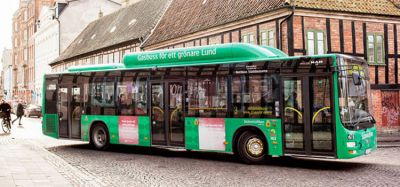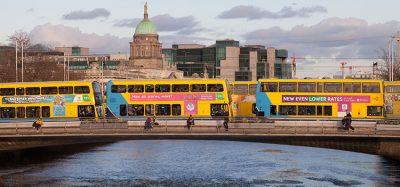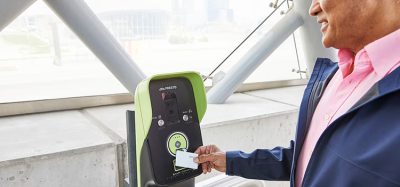The fork in the road ahead for autonomous mobility
- Like
- Digg
- Del
- Tumblr
- VKontakte
- Buffer
- Love This
- Odnoklassniki
- Meneame
- Blogger
- Amazon
- Yahoo Mail
- Gmail
- AOL
- Newsvine
- HackerNews
- Evernote
- MySpace
- Mail.ru
- Viadeo
- Line
- Comments
- Yummly
- SMS
- Viber
- Telegram
- Subscribe
- Skype
- Facebook Messenger
- Kakao
- LiveJournal
- Yammer
- Edgar
- Fintel
- Mix
- Instapaper
- Copy Link
Posted: 28 February 2020 | Jeroen Beukers - Transports publics genevois (tpg) | No comments yet
Our main transportation routes are in place – it is the on-demand collection and dispatch of passengers at the start and end of each trip that needs to be solved next. Jeroen Beukers, expert in autonomous vehicles at Transports publics genevois (tpg), asks whether the solution to this challenge could be found in driverless services.
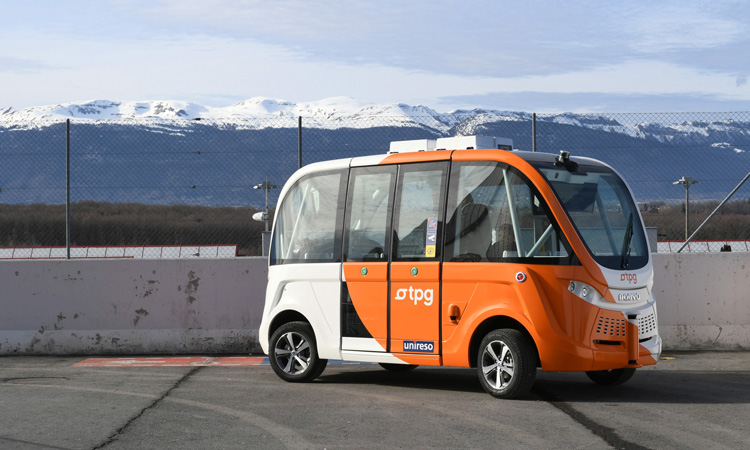

Demographics are changing; people are leaving rural areas and relocating towards the denser populated cities, including suburbs, creating higher concentrations of citizens per square mile.
Despite the greater volume of commuters this generates, the current trend is to ban conventional motorised individual traffic due to environmental constraints and to improve quality of life.
In order to support climate protection, we may replace internal combustion engine powered vehicles with pure electric ones, but the key question is in the optimal use of available road space. To be able to transport a group of 15 people you still need three passenger cars and to occupy 20 metres of street. This creates the same, or potentially even increases, traffic congestion. On the other hand, three separate vehicles give you a higher degree of flexibility to collect and dispatch passengers compared to just one vehicle.
Another question is the ability to operate a vehicle. While in former times youngsters were eager to pass their driving test at 18 years old, today, a large number of adults don’t hold driver’s licences due to the cost of ownership of a privately‑owned car. As a result, future vehicles have to be driven by specialist drivers or become fully driverless.
Maybe the solution for traffic congestion is to ban all vehicles – empty or occupied by a single person – from the inner cities and only allow vehicles with a specific mission. Vehicles designed with a purpose, able to transport a great number of passengers or goods on every square metre of road space could be the answer; larger vehicles ensuring up and down mass transportation on dominant routes with smaller ones just briefly waiting and ready for the next on-demand order.
New opportunities for public transport companies
This way we eliminate non-functional traffic and may condemn parking places at the side of the road, the surface of which can be used for intelligent mobility – bicycle lanes and future transport modes. This will certainly reshape the city’s infrastructure and open up new opportunities for public transport companies if they manage to offer better-than-ever, customer-focused transport solutions.
When greater volumes of people need to be transported simultaneously via main axes, it is an approved concept to use railways and bus lines at different ground levels to serve larger numbers of residents. Though these types of transport work well for the greater majority of people, they are not intended for door-to-door solutions that people expect from individual transport by car.
Passengers are not afraid to board a driverless vehicle. They already use trains, metros and trams without knowing if there is a driver inside
In fact, while the main displacement within an itinerary is typically collective, the start and end of the trip happen to be mostly personalised according to the specific demand of each passenger. In order to be able to offer such door‑to‑door solutions within a public transport system, the journey has to take place by means of several combined shorter itineraries – the multimodal transportation chain.
Holiday travel is the best example. Families used to travel in a monomodal way by car directly from home to their holiday destination. Today, families travel in an individual way from home to the airport, collectively catch a plane and are individually dispatched to reach their final destination. Everyone tends to accept this inconvenient multimodal way of travelling in at least three stages since it is cheaper, faster and enables people to easily travel further.
Bicycles are an interesting category as well, since many are battery powered these days with sales only trending upwards. Cyclists almost never join the multimodal transportation chain. They cycle from A to B without using other means of transport and electrical power enables them to cover even greater distances.
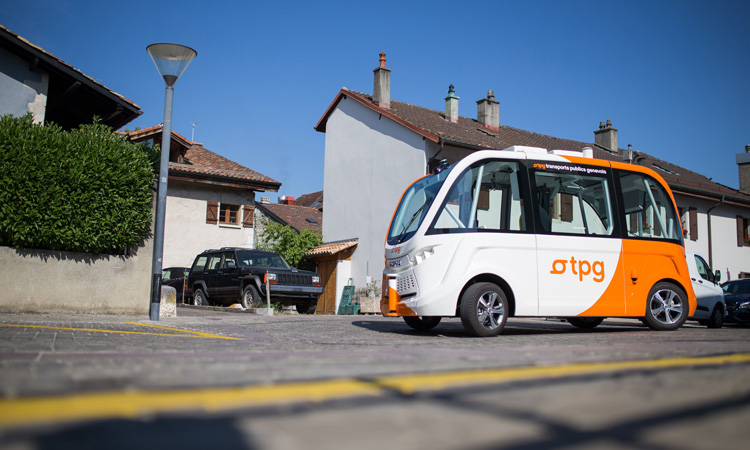

Challenge for public transport operators
The main mobility challenge for public transport operators is to provide their customers with a multimodal transport solution which is equally good, or even better, than the monomodal car or bicycle travel that they are so accustomed to today.
At present, public transport operators use vehicles that are primarily designed for either bulk or individual transport. It is useless to transfer 200 people with minibuses that have a capacity of 12 passengers each just to force the implementation of a monomodal transport solution. Even so, large trolleybuses can be used on fixed main trajectories with overhead electricity lines and serve the first and last mile in an on‑demand way while driving on an additional battery pack, but they are inconvenient to circulate in smaller neighbourhoods.
That said, the future of transportation also lies in the development of capacity per demand enhanced vehicles, which are able to hold a maximum number of passengers per vehicle length, and to keep kilometre per passenger driving distances at a strict minimum.
Main transportation routes are already in place. It is the collection and dispatching of passengers in an on-demand way at the start and end of each trip that we have to solve. Depending on the size and density of the area in relation with the expected flexibility and number of passengers to transport, we must either opt for a few larger or numerous smaller vehicles. However, using smaller vehicles each with a dedicated driver inside is financially not an option.
So, are first and last mile services going to be driverless? Passengers are not afraid to board a driverless vehicle. They already use trains, metros and trams without knowing if there is a driver inside. Besides, did you ever see people frightfully enter an elevator? Without a driver, steering wheel and other controls, we also gain extra space.
But what about the social interaction between man and machine? How does a driverless vehicle deal with the fact that someone on the sidewalk has the intention to cross the street?
Normally, you look at each other and without any gesture, the driver instantly knows that the pedestrian wants to cross and vice versa the pedestrian recognises the driver is going to stop.
Connected vehicles have already been successfully tested; the challenge is to communicate with older vehicles, two-wheelers, pedestrians and the surrounding infrastructure. Intelligent vehicles need to be able to detect the behaviour of non-connected moving objects. Why not add Lidars to the infrastructure to scan the environment or use the already available security cameras to detect someone with priority arriving from an unseen position?
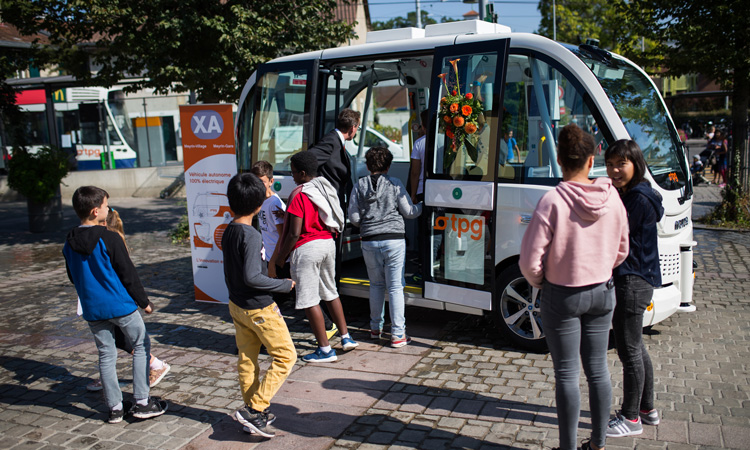

Turning point in terms of mobility
Public transport operators have to gain insights into V2X, fleet orchestration intelligence, GDPR, cyber security, data collection, legal aspects, societal changes and economic consequences. We are at an important turning point in terms of mobility.
Users don’t want a collection of different mobile travel applications in which they need to look-up or plan their trip. They want an assistant that already planned their journey before they’ve even thought about travelling. My assistant looks in my calendar and proposes personalised travel information. My assistant is aware of the fact that I would like to go home at the end of the day.
As a traveller, I want to know when my vehicle arrives, what it looks like and how to reach the pick-up location. I want to know where to leave the shuttle or what to do next. I don’t want to have to remember the name of the airport, I just need to go to the airport. As a traveller, I only want to be informed of delays, and time and itinerary changes when it concerns my travel.
Travellers want to receive a strict minimum of relevant information, and naturally, payments need to be integrated for every mode of transport in order to deliver one detailed, combined travel invoice every month.
Biography
Jeroen Beukers is an automotive engineer and transport consultant. He works at Transports publics genevois (tpg), the public transport operator in the Swiss Canton of Geneva, where he manages the EU-funded Horizon 2020 Avenue project. Within the framework of the Avenue project, tpg will showcase a full-scale on-demand public transport service with a fleet of autonomous minibuses operating in a geofenced zone, without fixed routes, fixed timetables or regular bus stops, and connected to the existing transport network.
Related topics
Connected & Autonomous Vehicles, Mobility Services, Passenger Accessibility, Passenger Experience
Issue
Issue 1 2020
Related modes
Autonomous vehicles
Related organisations
Transports publics genevois (tpg)




